Birdfinding.info ⇒ Fairly common in most of its range, especially on Guadeloupe (and some of its satelllites), Dominica and St. Lucia, where it can be found at all of the frequently-visited sites, and on several of the Leeward Islands: Saba, St. Eustatius, St. Kitts, Nevis, and Montserrat. Uncommon on St. Martin, St. Bartélemy, Antigua, Barbuda, and Martinique. Rare on St. Vincent, where its status is unclear.
Scaly-breasted Thrasher
Allenia fusca
Endemic to the Lesser Antilles: from St. Martin south to St. Vincent, where it occurs in all kinds of woodlands. Formerly also on Barbados, where apparently extirpated, and formerly or casually south into the Grenadines and Grenada.
Identification
A medium-sized, brown-and-white, cuckoo-like thrasher with a pale-yellow eye, a short, blackish bill, scaly-patterned underparts, and white undertail patches that show on the upperside as a narrow white terminal band or white outer corners when the tail is spread.
The upperparts are mostly neutral brown, often with a dull grayish cast, sometimes warmer brown, usually with a single narrow white wingbar.
The underparts are densely covered with brown scallops from the throat to the upper breast and on the sides, but mostly white on the center of the breast and belly and vent.
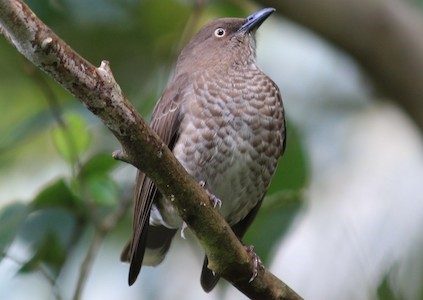
Scaly-breasted Thrasher, showing scaly pattern on its underparts. (Mermaid’s Secret, St. David, Dominica; March 7, 2017.) © Guillaume Cussonneau
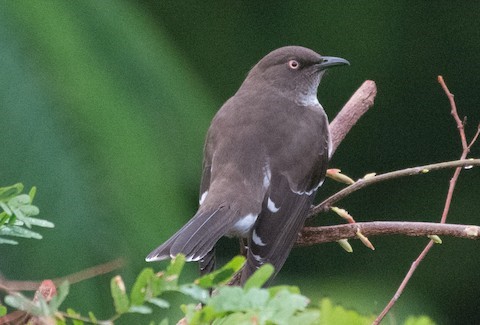
Scaly-breasted Thrasher, showing neutral-brown upperparts with a narrow white wingbar and narrow white terminal band on the tail. (Gros Islet, St. Lucia; December 22, 2018.) © Heidi Franklin
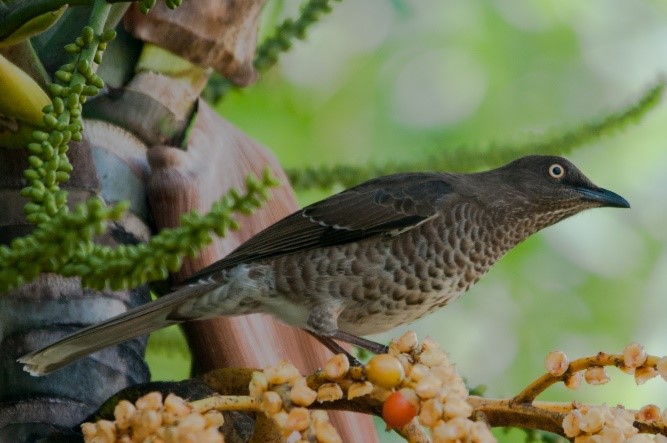
Scaly-breasted Thrasher. (Deshaies Botanical Garden, Guadeloupe; November 17, 2012.) © Frantz Delcroix
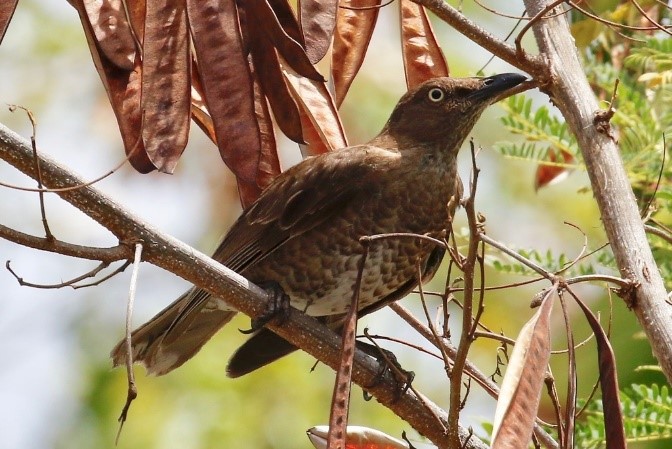
Scaly-breasted Thrasher, showing warm-brown plumage and dense scaling on underparts. (Cudjoehead, Montserrat; April 15, 2018.) © Bird Explorers
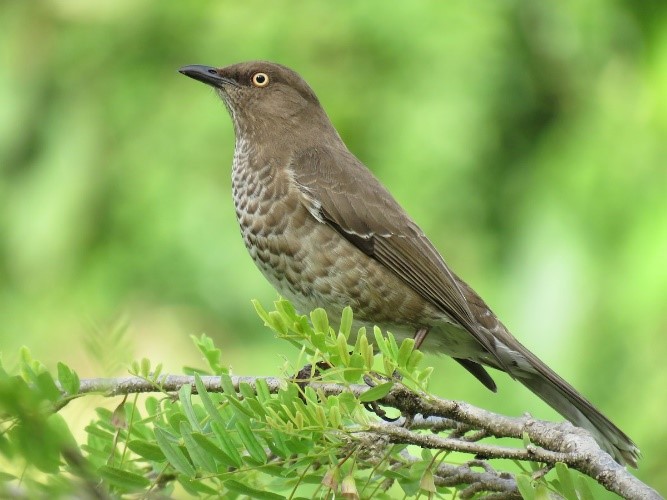
Scaly-breasted Thrasher, showing neutral-brown upperparts and scaly underparts. (Cabrits National Park, Dominica; December 20, 2016.) © Thomas Brooks

Scaly-breasted Thrasher, showing neutral-brown upperparts and scaly underparts. (St. John, Dominica; March 19, 2018.) © Colin D. Jones
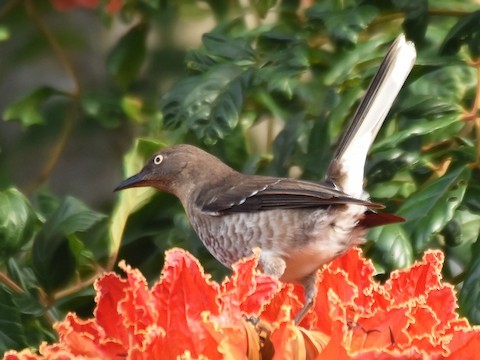
Scaly-breasted Thrasher. (Romney Manor, St. Kitts; March 4, 2018.) © Steven Mlodinow

Scaly-breasted Thrasher, showing white outer tail corners. (La Clery, St. Lucia; April 23, 2008.) © Leonel Richard
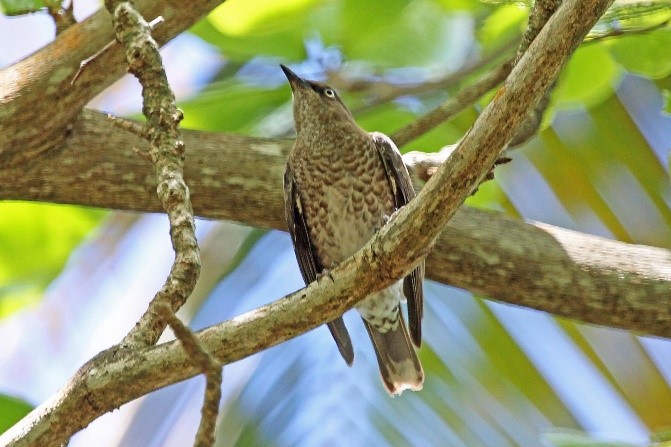
Scaly-breasted Thrasher, showing somewhat rusty brown scaly pattern on the underparts, and white undertail patches. (Syndicate Trail, Dominica; April 9, 2013.) © Greg Griffith
Cf. Pearly-eyed Thrasher. Throughout its range, Scaly-breasted can be confused with the larger Pearly-eyed Thrasher, which has similar plumage overall, but a much larger, pale bill, and brighter, whiter eyes. As its name suggests, Scaly-breasted has a scaly or scalloped pattern of curved markings on its underparts, whereas Pearly-eyed shows more angular chevrons or blurry streaks—but this distinction is not always obvious. Scaly-breasted also has evenly brown upperparts, whereas Pearly-eyed’s upperparts are mottled with a mix of darker and lighter tones.
Notes
Polytypic species consisting of five recognized subspecies (one of which, atlantica of Barbados, is recently extinct).
References
BirdLife International. 2018. Allenia fusca. The IUCN Red List of Threatened Species 2018: e.T22711140A131962114. http://dx.doi.org/10.2305/IUCN.UK.2018-2.RLTS.T22711140A131962114.en. (Accessed November 25, 2019.)
Brewer, D., and B.K. MacKay. 2001. Wrens, Dippers, and Thrashers. Yale University Press. New Haven.
Cody, M. 2019. Scaly-breasted Thrasher (Allenia fusca). In Handbook of the Birds of the World Alive (J. del Hoyo, A. Elliott, J. Sargatal, D.A. Christie, and E. de Juana, eds.). Lynx Edicions, Barcelona. https://www.hbw.com/node/58185. (Accessed November 25, 2019.)
eBird. 2019. eBird: An online database of bird distribution and abundance. Cornell Lab of Ornithology, Ithaca, N.Y. http://www.ebird.org. (Accessed November 25, 2019.)
Raffaele, H., J. Wiley, O. Garrido, A. Keith, and J. Raffaele. 1998. A Guide to the Birds of the West Indies. Princeton University Press, Princeton, N.J.
